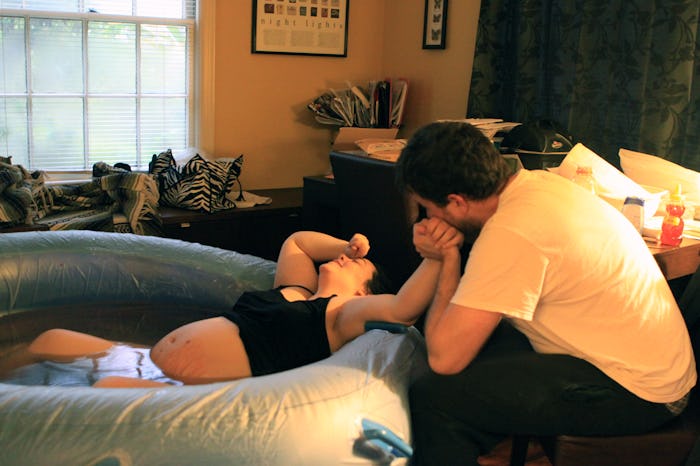Life
Do Kegels Help With Childbirth? Exercising Your Vagina Could Shorten Your Labor
Pregnancy does a number on your body, in ways you never imagined. And although it makes sense that carrying all that weight in your uterus might wreak havoc on your pelvic muscles, you may not have known that there’s something you can do about it. Particularly during the third trimester of pregnancy when your baby is its heaviest and not-so-fun side effects abound (I’m talking hemorrhoids and peeing every time you laugh or cough.) Doing Kegel exercises can help moderate those symptoms. Not only that, research has shown that doing Kegel exercises can help with childbirth. Even better — they can shorten labor.
Yes, you heard that right. Kegel exercises, which work to strengthen your pelvic floor muscles, can potentially shorten the active phase of labor. When you’re not expecting, pelvic floor muscles help support your bladder, uterus, and bowels. During pregnancy, these muscles are stretched to their limits. According to the American Pregnancy Association, toning your pelvic floor muscles will allow you to have greater control over these muscles, even during labor and delivery. And since it’s your pelvic floor muscles that you’re flexing when you push your baby out, strong ones can help force the baby through the birth canal faster.
So what are these magic exercises and how can you do them? According to the Mayo Clinic, Kegel exercises work by contracting the muscles of your pelvic floor and holding them for a few seconds. Then you release them and do it again. It’s almost like doing reps at the gym, but don’t require any equipment and can be done anywhere. If you’re not sure how to find your pelvic floor muscles, BabyCenter suggests stopping the stream of urine when you’re going to the bathroom. The muscles that you flex to stop your pee are your pelvic floor muscles, and you’ve just done your first Kegel exercise. Congrats!
You can start slowly, by holding them for 3 to 5 seconds in sets of ten, three times per day. Kegel exercises can be done anywhere, whether you’re watching TV, stuck in traffic, or sitting at your desk, and no one will have any idea you’re even doing them. If you need some motivation (aside from that whole “less pushing” thing), there are smartphone apps that send you reminders and have workout suggestions (of course there’s an app for that.)
The benefits of Kegels go beyond just during pregnancy, too. Doing them after giving birth can help with perineal healing and regaining bladder control — both highly desirable outcomes, if you ask me. So while doing Kegel exercises can’t guarantee a shorter labor, they definitely can’t hurt. And with all the added benefits (less peeing in your pants, anyone?), there’s virtually no reason not to do Kegels. Plus, they’re so easy, I may even have been doing them while I wrote this piece.
